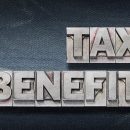Take Note of These 6 Tips for Last-Minute IRA Contributions

At the end of every financial year, people rush towards making their last-minute contributions to save tax. Even though one might have invested as per their annual financial plan, sometimes there remains a gap due to unavoidable circumstances. An individual retirement account (IRA) is one of the most preferred investment tools for last-minute contributions as it comes with an exceptional tax benefit.
While dealing with IRA contributions, whether in a traditional IRA or a Roth IRA, there are several points that need to be kept in mind, like taxes and other regulations. In order to make the decision tax-effective and beneficial, here are a few tips to keep in mind while investing in an IRA.
Here are six points to make a note of while dealing with last-minute IRA contributions:
- A major financial decision: A traditional IRA or a Roth IRA
- A backdoor entry to deductible IRA contribution
- An easy option to convert
- An excellent way to maintain disciplined investing
- An added advantage of increased contribution limits
- A cover for family
- You can get maximum tax benefits.
- You have an additional source of saved funds that your child can utilize as a continuing investment plan for their retirement needs.
This might be a thought-provoking decision to make, but it holds high importance in your financial plan and tax returns. To begin with, check your work contributions and their underlying rules. Generally, a traditional IRA is dealt with stricter regulations and fewer options for deductions. On the other hand, a Roth IRA offers a lot more flexibility. The choice between the two can be made on the basis of your tax slab. The two things that you need to keep in mind are your current tax rates and the future tax rates when you make withdrawals.
You can opt for a traditional IRA if you think your present tax slab is higher and you speculate a comparatively lower slab rate post-retirement. However, if your current tax rates are lower and you speculate a higher tax rate in the future, then Roth IRAs will be suitable for a tax-efficient withdrawal after you retire.
If you earn well and do not fall under the income limits for making a Roth IRA contribution or cannot invest in a deductible IRA, then you can consider investing in a non-deductible IRA. The key point to be noted here is that you first need to make an initial contribution to a non-deductible IRA and then later convert it to a deductible or Roth IRA.
This process is referred to as a backdoor entry to the Roth IRA or deductible IRA contribution. However, while you choose this conversion, be mindful of its tax implications. In addition to this, do not forget to document your contributions as well as conversions.
The most significant factor with making IRA contributions is that you always have an option to make conversions. If the return over your investments is your priority and you think a Roth IRA contribution is not doing as well as you hoped, you can always shift back to a traditional IRA or vice versa.
Often, people open an IRA account in lieu of saving taxes for a given year. They also choose the tool when their retirement goals are on the top of their list of priorities. However, they end up forgetting about it soon enough. This may not have a direct impact on your present-day earnings but can levy a huge opportunity cost once you retire. Funding your IRA accounts now can help you manage the tax deductions in a more efficient way at a later stage.
The current contribution limits for investing in an IRA account has gone up as compared to the year 2017. For people under the age of 50, the contribution limit is $6000 as opposed to $5500 earlier. For people above the age of 50, the contribution limit has been increased to $7000 from $6500 in 2017. The idea behind these modifications is to emphasize on the fact that the more you contribute, the higher will be your savings. This is beneficial for tax saving, as well.
Spousal IRAs are an excellent way of maximizing your IRA contributions. If your spouse does not work and you earn enough to cover contributions for the both of you, then you can consider opening a joint IRA in their name. This will help you maximize your retirement savings and get better tax benefits over them.
In addition to this, there is also a provision for making an IRA contribution on behalf of your child who may have worked and earned in the past. Irrespective of their current status of earnings or employment, you can make IRA contributions in their name and yet again maximize your tax benefits. This will be beneficial in two ways:
To sum it up
For most people, IRA contributions are an integral part of their retirement plan. While not everyone knows about all the benefits of making these contributions, these significant points can help you figure out what may suit you the best. However, you must be cautious while making these decisions as taxes can get tricky if not dealt with diligently.
If you are thinking of contributing to an IRA, you can seek professional guidance from Financial Advisor










